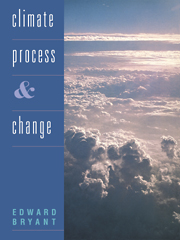Preface
Published online by Cambridge University Press: 05 June 2012
Summary
I have been sitting at my home computer for the last few months absorbed in finishing the drafts of this text. The writing has not been onerous. Outside through the open doors into my garden, I have been witnessing one of the best autumns I have experienced: clear blue skies, a light breeze and temperatures up to 23–25°C each day for weeks on end. Unfortunately, I have not been able to venture far to enjoy the weather more. The weather is overdue because southeastern Australia underwent the coldest summer in thirty-three years. It was certainly the coldest summer I have experienced. While many of the vagaries in temperature were due to the fluctuations in the state of tropical ocean temperatures in the Pacific Ocean, between the El Niño–Southern Oscillation (ENSO) and La Niña, this was not the complete picture. Neither were the abnormal temperature changes due to enhanced ‘greenhouse’ warming, as trumpeted by the media when it was too warm. Nor did they represent the demise of the Earth's present, warm interglacial climate.
In the clear autumn sky, every time a northeast sea breeze came up, a white haze wafted across my view of the Illawarra Escarpment in the distance. When I have managed to walk along my local beach, I can trace the white haze back to an orangish smog above Sydney, 40 kilometres to the north. The haze does not officially exist.
- Type
- Chapter
- Information
- Climate Process and Change , pp. xiii - xivPublisher: Cambridge University PressPrint publication year: 1997



